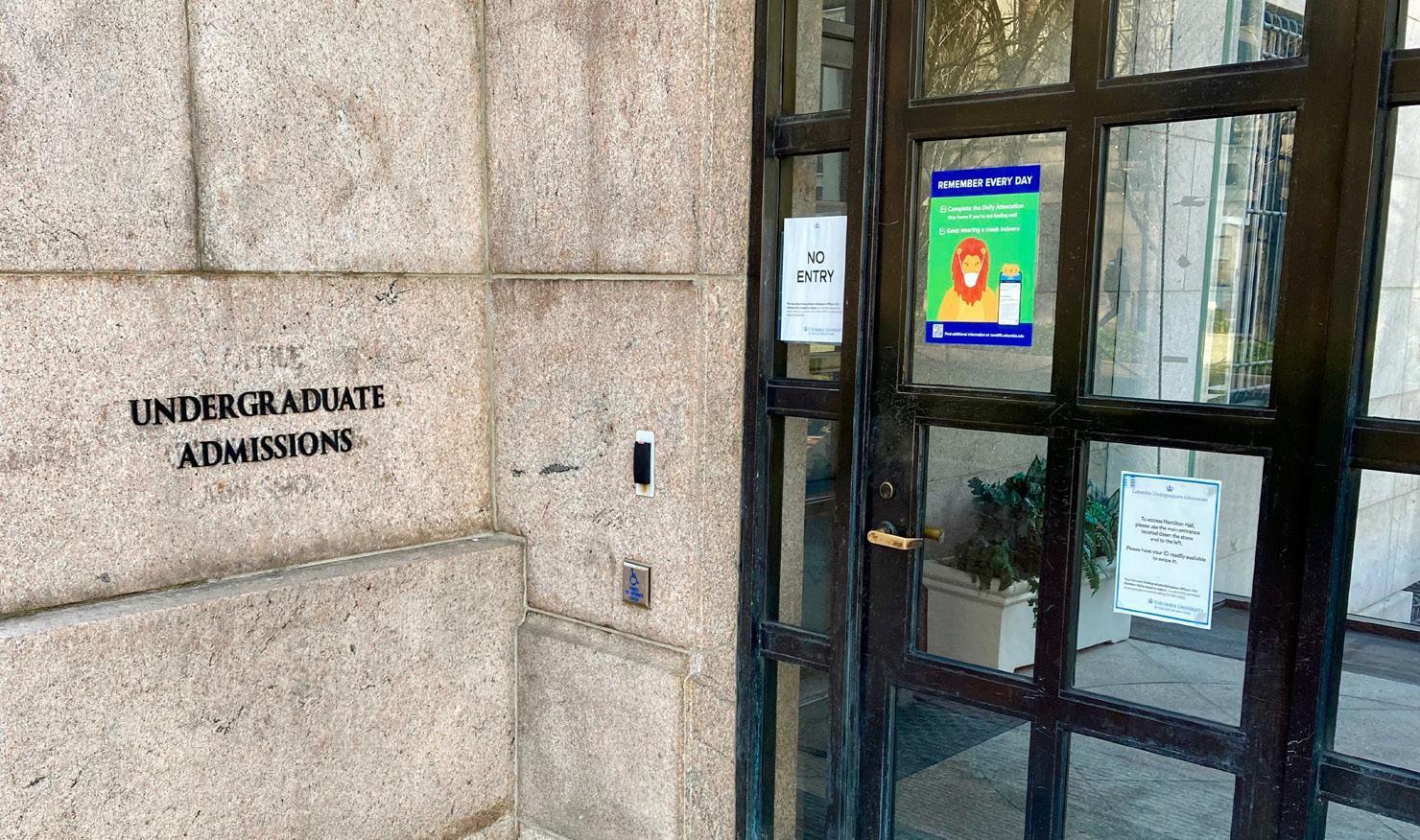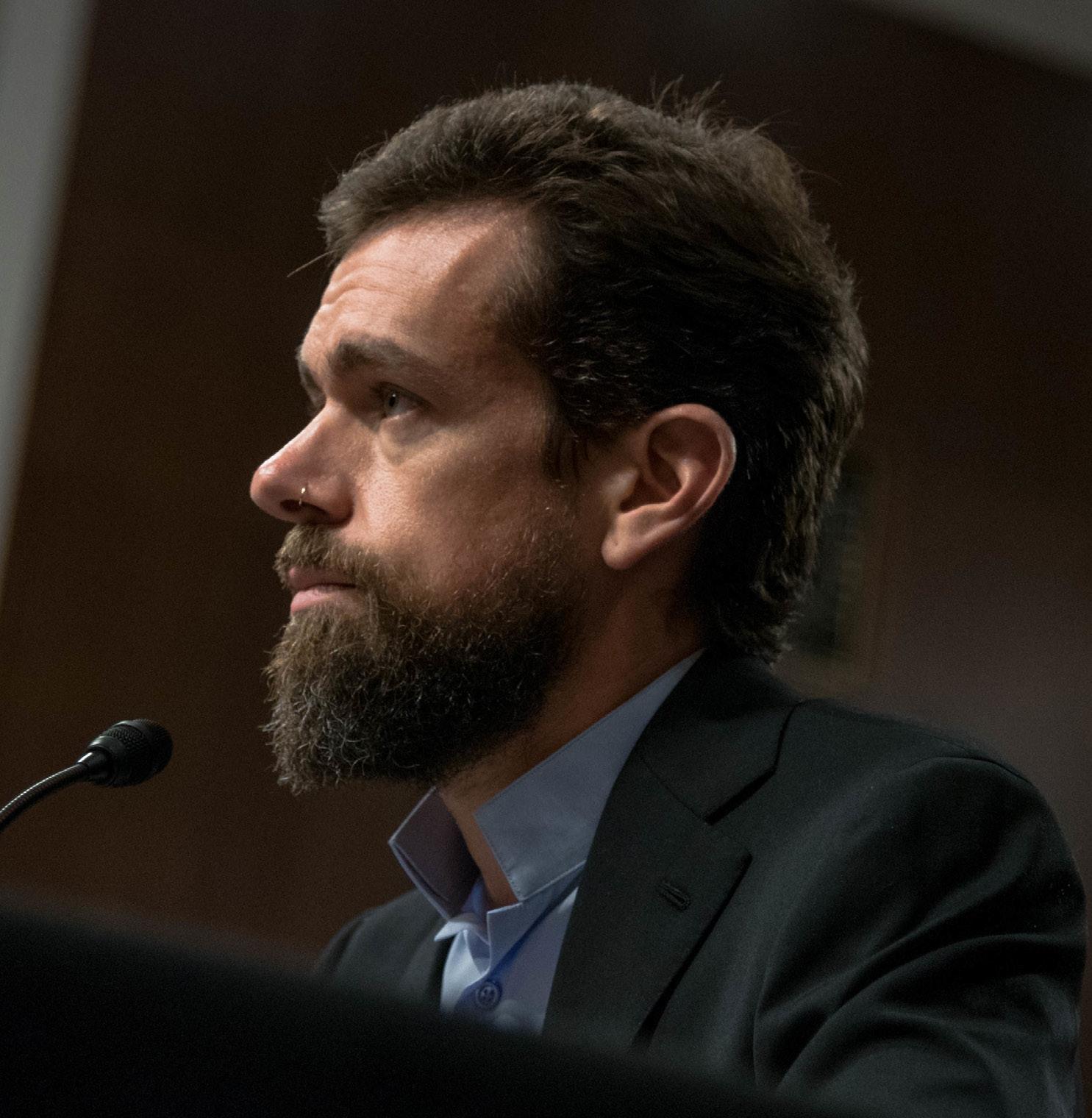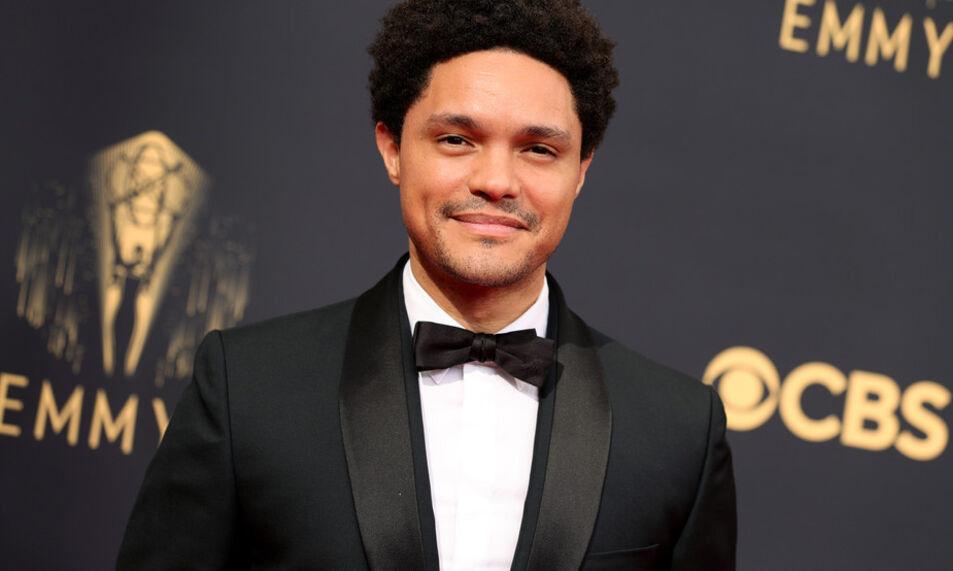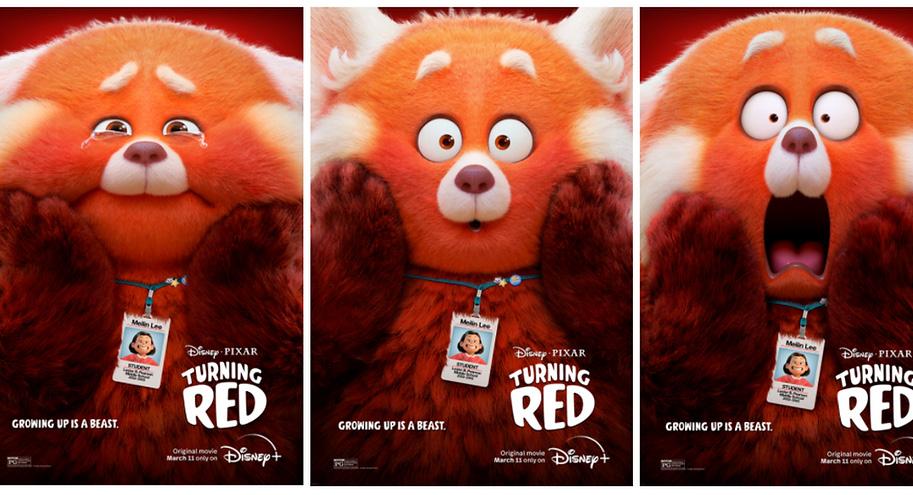
24 minute read
Judge Ketnaji Brown Jackson
off-campus opinions
Ethan Chan ’23
Advertisement
After years of hard work, the culmination of one’s academic and extracurricular efforts is hidden behind the click of a button. The ecstasy of college admissions reaches its pinnacle during these tense weeks. Emotions come as decision letters are opened and schools finalize their results in another historic year in admissions results.
Across the board, the number of applicants has increased exponentially relative to last year due to myriad factors, one of which is test-optional applications. According to FairTest, 75% of colleges and universities, more than 1600, went test-optional for the 2021-2022 admissions cycle. For many students, the test-optional choice essentially eliminated the pressure of fulfilling the respective “requirements” for the colleges they wanted to apply to.
Consequently, it forced admissions officers to weigh factors such as GPA, extracurriculars, essays, etc. much more heavily. For more selective institutions, many believe the test-optional was the primary reason for the record number of applicants. Harvard College received 42,749 applications this admissions cycle, according to IvyWise, and accepted 1,962 new students. The total number of applications increased 14.59% from 2019 when the test-optional policy was not in place. Harvard has extended this policy until 2030.
While the test-optional policies were initially made to accommodate the COVID-19 testing complications, it has caused the already low acceptance rate to decrease substantially. For the next generation of Sixth Formers, the application process will only get harder.
Events in 2020 regarding social injustice and equality have been of great emphasis for many colleges. A push toward greater racial and gender equity is reflected in this year’s admissions cycle. Of the full pool of admitted students to Harvard’s Class of 2022, women outnumber men by 50.1% to 49.9%. This marks the first time in almost ten years at Harvard in which women outnumber men in the incoming class.
Similarly, first-generation students went up by 2.2%, 15.5% were African-American, 12.2% were Latino, and 22.7% of applicants were Asian-American. All of these percentages have gone up since the admissions cycle of 2021 for Harvard, and the trend looks to continue in the next couple of years. Harvard is also defending itself against allegations of racial discrimination against Asian-American applicants in Students For Fair Admissions v. Harvard University. The duality of Harvard’s efforts is shown in this admissions cycle but many applicants still and other individuals strive to see a change in this issue for not just Harvard but other universities as well.
According to University Business, Tufts University reports that it has granted acceptances to a staggering 9% of its nearly 35,000 applicants, another all-time low in overall acceptance rates for the Class of 2022. Tufts also said acceptances went out to its most diverse group of students ever.
“We are thrilled that more students from more diverse backgrounds see themselves thriving at Tufts,” Dean of Admissions J.T. Duck said in a statement. “Given last year’s strong positive response to our offers of admission, we have made slightly fewer offers this year and hope to be able to admit some outstanding students from our waitlist in May.”
Tufts officials say applications have not only shot up by 50% since 2020 but also the number of African-American students applying has jumped by nearly 90% since 2019, a demographic similar to that of Harvard and other colleges.
On a similar note, Columbia University officially stated on their website on March 31 of this year that there were 4% more students of color, 3% more first-generation students, 2% more Pell Grant eligible, and 2% more international students in this year’s admissions cycle.
All in all, the college admissions process has seen unprecedented change over the past two years. Statistics indicate a different approach that will likely continue through this decade. With all these percentages and numbers, it is important to consider the achievement of every applicant in this process. A percentage doesn’t define the predicted success or worth of an individual and everyone should be proud of the next step in their journey. In an already hyper-competitive environment, only exacerbated by some of these factors, the quality of education doesn’t correspond with a lower acceptance rate; the initiative a student takes is ultimately what matters.

A reflection on 2022 college admissions
Undergraduate Admissions at Columbia University
JOEY KAUFFMAN ’23

Casey Williams ‘24 “On this vote, the yays are 53. The nays are 47 and this nomination is confirmed,” Vice President Kamala Harris said last Thursday, confirming the first African-American woman to serve in the U.S. Supreme Court.
Ketanji Brown Jackson was nominated by President Joe Biden on February 22, 2022, after Supreme Court Justice Stephen Breyer had announced his retirement. Jackson had plenty of experience and all the necessary qualifications for the U.S. Supreme Court Justice position: she served on the U.S. Court of Appeals for the D.C. Circuit with bipartisan support, as Vice-Chair of the U.S. Sentencing Commission, as a Supreme Court clerk for Justice Breyer, and even as a public defender, the first formal federal public defender to serve in the U.S. Supreme Court.
With all the necessary qualifications, most would assume that Justice Jackson would have a relatively smooth court hearing, but that is nowhere near the case. Su-
Judge Jackson’s nomination process continues to demonstrate partisan divides
preme Court Justice nominees are usually met with resistance from their opposing party, and throughout history, ugly nominations have not been uncommon. Louis D. Brandeis was appointed to Supreme Court Justice by President Woodrow Wilson, widely recognized as the most contested nomination in the history of the United States. Brandeis was the first Jewish Supreme Court nominee, sparking blatant anti-Semitism. The nomination process took a total of four months, and Brandeis was constantly attacked by news outlets such as The Boston Globe that described him as “a radical, a theorist, impractical, with strong socialistic tendencies.”
Another memorable nomination process in recent memory was the nomination of Supreme Court Justice Brett Kavanaugh, nominated by Former President Donald J. Trump. Kavanaugh served on the Court of Appeals for the District of Columbia Circuit, as a clerk of former Supreme Court Justice Ruth Bader Ginsburg, and was widely recognized as highly qualified. During Kavanaugh’s nomination process, he was accused of sexual assault by Deborah Ramirez and Julie Swetnick, further intensifying the process and generating more conflict between both parties. Then-Senator Harris accused Kavanaugh of lying under oath and lying to the American people, and Senator Elizabeth Warren stated that Kavanaugh was nominated without a thorough investigation of the allegations. After a bitter hearing, Justice Kavanaugh was confirmed as Supreme Court Justice by a vote of 50-48, but the point stands that nomination processes have frequently been controversial and difficult.
During Judge Jackson’s nomination process, the most popular Republican lines of attack were on Jackson’s work as a judge, her sentencing of child pornography cases, and views on critical race theory and LGBTQ issues.
Still, one of the more memorable moments was when Jackson broke down into tears after being praised by Senator Cory Booker. Booker praised Jackson for dealing with her nomination process, displaying an extraordinary demeanor.
This was one of the most conflicted nomination processes in the recent history of nominations, and Kentanji Brown Jackson is now the first African-American woman to serve as a justice on the Supreme Court.
Haverford students must understand that these current events and political opinions can create conflicts amongst one another, and we must look past it and instead towards building a better school community.

Elon Musk should buy Twitter
Colin Stewart ’22
When the pilgrims left Europe to escape the corrupt Church of England in the early 17th century in hopes of a better life in the New World, a few things were on their minds; most notably, the freedom to practice their religion as they saw fit. They wanted to practice and say what they believe; the latter, perhaps, has become the most important ideal in American history.
Enshrined in the First Amendment, the prohibition against the government’s “abridging the freedom of speech” is one of the most cherished by the American people. Although the First Amendment is not an expansive protection across all of American society (it only constrains the government), the value it encapsulates is deeply embedded in American culture: the importance of one’s ability to speak his or her mind openly.
In modern times, the American people stand at an important crossroads.
It’s a story as old as time: technological development outpacing all moral and legal constraints. With the hyper-development of the internet and subsequent creation of social media, the law has not been able to keep up; § 230 controls the restrictions social media platforms can make to user-generated content as well as defining liability for these companies in regards to user-generated content. The law has done an inadequate job. (you can look to my article “Controversy surrounds Google Monolith” for a more indepth discussion on § 230).
The internet, specifically social media platforms, have become today’s town square. No longer are the days of print newspapers or broadcast journalism where the likes of The New York Times and Walter Cronkite dominated with their, at the time, largely fair coverage.
Social media now dominates the information sphere.
Currently, freelance journalists and commentators control much of the mainstream political discussion. As of January 2021, Pew Research Center found that 86% of adult Americans received some or most of their news from social media, an even higher number for younger generations, our generation. And with politics growing increasingly polarizing, the ease of access to information on both sides of the political spectrum on social media platforms like YouTube, Twitter, and Facebook is becoming more important than ever before. Twitter, for example, although its substantive political discourse is virtually non-existent, does provide many with their daily dose of news. Thus, Twitter has a moral obligation to provide equal access and platforms to users on both sides of the political spectrum by enforcing its rules in an evenhanded way, something Twitter has a shoddy track record with. Here are some examples:
Twitter removed the both New York Post’s account and any post with a link to New York Post’s article on Hunter Biden’s laptop because it violated Twitter’s “Hacked Materials” policy (two points to mention here: first, the validity of what is said in the article does not matter in this argument, and two, Twitter would later admit that it did not violate this policy). This was done during the height of election season and could have had a real effect on the vote tally.
But, when then-President Trump’s tax returns were leaked to the public after the New York District Attorney acquired them during discovery in a lawsuit, Twitter refused to remove it, even though it was definitionally protected by their “Private Information Policy.”
Twitter removed Babylon Bee’s account for satirically naming Rachel Levine as their Man of the Year because of hate speech, misgendering, and inciting violence against her. But when Comedian Kathy Griffin posted a picture of herself holding up a fake but bloodied, severed head of former-President Trump (look it up for yourself, it’s viscerally disgusting), Twitter protected her, even though that post could much more convincingly be called a threat of violence.
Although there are many more examples that could be given across many more platforms, those two are, perhaps, the most demonstrative of the difference in treatment.
Frustrated, many conservatives moved towards alternative platforms. Parler, although all its users were painted as QAnon conspirators, was a largely normal social media app with conservative users. It was quickly taken off of the Apple App Store, Google App Store, and unfindable on Google or Bing.
The result is all of the mainstream social media platforms leaning left, silencing—sometimes rightly, most of the time wrongly—conservative voices. Any attempt to start a more free-speech-friendly platform has been met with monopolistic practices— something Google was getting prosecuted for by the United States Attorney General and many state Attorneys General before the Biden Administration stopped the case.
There is an easy solution to this problem: Elon Musk. As controversial a man as he is, Musk has consistently proven that he values free speech and falls into the heterodox gray area of American politics, two characteristics that lend themself to the acceptance of opposing ideas and unrestricted discussion.
If one can look past his smoking marijuana on The Joe Rogan Experience podcast or his, quite frankly, hilarious memes that he posts on his Twitter account, they will find that Musk often uses his monetary success to support causes he cares about. That’s why it was no surprise when he announced his intentions to purchase Twitter outright shortly after becoming the company’s majority shareholder.
Although Twitter has recently put in place institutional guards to discourage Musk from purchasing Twitter, I still believe that should Musk purchase Twitter, he could dramatically change the state of American political discourse for the better.


DAN TAYLOR / HEISENBERG MEDIA VIA WIKIMEDIA COMMONS
Elon Musk at the Dublin Web Summit in 2013
arts
2022 Grammys surprise fans
Russell Yoh ’24
Aor over 60 years, songwriters, producers, singers, composers, music engineers, and more of the biggest names in music have gathered together on what many consider to be the “biggest night in music,” the Grammy Awards. The Recording Academy gives out over 80 awards each year for singles, albums, collaborations, scores, production, music videos, music films, and more. This year’s Grammys took place on April 3, 2022, after a two-month delay due to a spike in COVID-19 cases. Music has always been something that unites people, and especially in the years of the pandemic, music has been even more important. After last year’s ceremony took place with no audience at the Los Angeles Convention Center, everyone was excited to bring the Grammys back to the big stage. This year’s awards took place in Las Vegas, Nevada at the MGM Grand Garden Arena, hosted by comedian and actor Trevor Noah. It was an exciting night with tons of performances, red carpet outfits and interviews, and awards. Going into the ceremony, Jon Batiste had the most award nominations of any artist of the year (eleven nominations). Behind him were Justin Bieber, H.E.R., and Doja Cat with eight nominations, followed by Billie Eilish and Olivia Rodrigo, each with seven. Of course, just like every year, there were some expected winners along with some snubs and surprises. The big four awards of the show are always “Record of the Year,” “Song of the Year,” “Album of the Year,” and “Best New Artist.” This year, the number of nominees in the Big Four increased from eight to ten, so the competition was stronger than ever. The nominees for “Record of the Year,” an award given to the artist(s), producer(s), and engineer(s) of a song, did not come as a shock to most. Lil Nas X’s “Montero (Call Me By Your Name),” Olivia Rodrigo’s “drivers license,” Billie Eilish’s “Happier Than Ever,” Doja Cat and SZA’s “Kiss Me More,” and Bruno Mars and Anderson .Paak’s new duo Silk Sonic’s “Leave The Door Open” seemed to be the frontrunners, and also the obvious choices to nominate in this category. The award ended up going to “Leave the Door Open,” a throwback-sounding 70s R&B track. While it was one of the bigger hits of the year, it was still surprising for many. What was even more shocking was that it also won the award for “Song of the Year,” an award given to the

WIKIMEDIA COMMONS
Trevor Noah at the 2022 Grammys
songwriters, against the similar frontrunners of Olivia Rodrigo, Billie Eilish, Doja Cat and SZA, Lil Nas X, along with H.E.R., Ed Sheeran, and more. The winner for “Best New Artist” seemed to be a pretty obvious choice from the start, with Olivia Rodrigo one of the biggest artists of 2021. She did end up winning, beating out Baby Keem, FINNEAS, Glass Animals, The Kid LAROI, Saweetie, and more. While this wasn’t a huge shock, there was still a lot of good competition in the mix. Past winners of the award include The Beatles (1965), Mariah Carey (1991), Maroon 5 (2005), and the most recent winner Megan Thee Stallion (2021). The final category of the Main Four is “Album of the Year,” which has always been the biggest award of the night. With ten nominees, it was anybody’s game. The albums in the mix included Jon Batiste’s WE ARE, Lady Gaga and Tony Bennett’s Love For Sale, Justin Bieber’s Justice, Doja Cat’s Planet Her, Billie Eilish’s Happier Than Ever, H.E.R.’s Back of My Mind, Lil Nas X’s MONTERO, Olivia Rodrigo’s SOUR, Taylor Swift’s evermore, and Kanye West’s Donda. Most predictions from various news sources pinned Billie Eilish, Olivia Rodrigo, or even Doja Cat to end up taking the trophy home, but none of these artists won. Jon Batiste took the award home for his jazz and R&B-influenced eighth studio album WE ARE. This was an unexpected outcome, even for Jon himself, who appeared confused, as he slowly stood up once Lenny Kravitz announced his win. While this award may be considered an upset for many viewers, it was the first time a black artist won the award since 2008, when Herbie Hancock won for his album River: The Joni Letters.
The night went successfully overall, but there ended up being a few surprising snubs. Billie Eilish won none of her seven nominations, which came as a surprise for most considering she won all four of the Big Four categories just two years prior, and Record of the Year the year before. Lil Nas X also went home with no awards, even after his incredibly successful year with multiple number one hits and the release of his charttopping debut album. Justin Bieber was another snub, going home with zero Grammys after being one of the most nominated artists of the year. All three artists were nominated for three out of the main four categories, but snubs like these are bound to happen every year.
The night’s biggest winner was Jon Batiste, who won five of his eleven nominations, including Album of the Year, best American roots performance, and best American roots song for his track “CRY,” best score soundtrack for visual media for the movie Soul, and also best music video for his single “FREEDOM.”
Silk Sonic was another big winner, winning four out of their four nominations, all for their hit single “Leave the Door Open” in an impressive Grammy feat called a “clean sweep.” Along with Record and Song of the Year, they also won Best R&B Performance and Best R&B Song.
Olivia Rodrigo was the next biggest winner, taking home Best New Artist, along with Best Pop Solo Performance for her hit “drivers license” and Best Pop Vocal Album for her breakout debut album SOUR. The Grammys this year were an exciting night as always, and next year’s is lining up to be just as good.
Red Hot Chili Peppers’ new album: a masterpiece born from reconnection
Ethan Lee ’24
All artists age, and with age, music evolves. The Californian band Red Hot Chili Peppers is no exception to this rule. With the return of John Frusciante as guitarist, their new album Unlimited Love nods at their past successes and combines the wisdom of the modern Red Hot Chili Peppers with the energy of the old Red Hot Chili Peppers.
At just over 70 minutes, Unlimited Love’s sound ranges from the funky bassdominated tone of older albums to the more melodic and blended sounds of more recent ones. Bassist Flea’s tone and moving riffs both juxtapose and blend with Fruistiante’s grungy but meticulous sound. With the tight backbeats of Chad Smith’s drumming, the rhythm section of this album is powerful and innovative.
On first listen, some listeners might find the vast variety of genres disconcerting and strange, with the soft ballads of “Tangelo” contrasting the harsh punk rock of “The Heavy Wing.” But I believe that this is an era of experimentation for the Red Hot Chili Peppers as they explore old and new routes in their musical space.
The familiar rap-rock sound found in “Aquatic Mouth Dance” takes inspiration from older albums like Blood Sugar Sex Magik, while the smoother and melodic surf-rock of “White Braids & Pillow Chair” references the success of Californication. It is almost as if the Red Hot Chili Peppers wish to make up for the 10+ years of Fruistiante’s absence in this album.
The commercial success of Unlimited Love is no mistake. The Red Hot Chili Peppers once again reproduced the controlled chaos that makes a successful rock album.
Its release symbolizes no ordinary creation: a rebirth of the connections between four band members.

Turning Red brings visibility and comedic realness to adolesence
Christopher Schwarting ‘24
Growing up is tough, especially when puberty hits. It attacks the mind and the body with fury in ways you cannot quite fathom until it’s already upon you: the voice deepens, the pits sweat, the moods swing. I have never had any desire to revisit this stage of my life—or, if it is still upon me, I doubt I will have a desire to visit in the future. But in the case of Disney Pixar’s Turning Red, the film provides a pleasantly relatable and comedic take on this transitional stage of life, all while infused with the long under-appreciated cultural influence of the Sino Diaspora.
Mei is a thirteen-year-old girl with the traits that define the young: fascination with pop music, an accompaniment of technology in the form of a Tamagotchi watch, and a distinctly rebellious attitude towards her parents.
Where she differs, however, is in how her adolescence takes its roots: pandas. Whenever Mei changes in disposition, she transforms into a red panda which, as fascinating as it is for the viewer, terrorizes the young girl. To rid herself of this familial trait, which she learns is shared by her mother, Ming, and other relatives, must embark on an exploration of her heritage. When she learns to love her new trait and embrace her individuality, she must debate whether or not to rid herself of the panda as those have before her, thus resulting in conflict with her family.
In rendering the emerging teenage experience, Disney blends appropriate humor with provoking self-reflection. While not all experience their teenage years through the same lens, one begins to feel as if they know a Mei, maybe within themselves, where they must seriously consider the future version of themselves. Or perhaps the viewer feels like they know one of Mei’s friends, who together create an outcast quartet that takes on the world with compassion and youthful optimism.
This striking realism within these ani-
mated personas lies in the genius of casting. Rosalie Chiang (Mei) brings vibrance to the young girl that instantly gives off the impressionability of her age, while Sandra Oh’s (Ming) brilliance in character interpretation blurs the lines between sentimentality and rote dialogue.
What also weighs heavily on the film’s appeal to the teen audience is the soundtrack. Ludwig Göransson—who has worked with the likes of Childish Gambino, HAIM, and Adele—brought a technically diverse array of compositions to the movie’s demanding variations in mood and style. With contributions from Billie Eilish and her brother Finneas O’Connell, who wrote three pieces for the film’s K-Pop and boy-band-sounding group, 4*Town, the appeal of the music is simple: it’s catchy.
Via these influences, director Domee Shi, the architect of the Oscar-winning short film, “Bao,” takes the cliche of teenage selfdiscovery and transforms it into something more valuable. Turning Red’s plotline is rooted in Asian heritage and representation. To see North American-Asian representation in mainstream film is still a rarity, especially when it comes to youth-oriented media.
And while the protagonist Mei traces her roots to the Sino Diaspora, Shi is sure to draw influences from across the Asian community. The subtlety of Japanese anime referencing in the animation, the homage to Korean pop culture in the music, and the constant relationship drawn between Chinese spiritualism and contemporary culture give visibility to those often unrepresented in this sort of storyline.
At the same time, this is also where Turning Red shows its weaknesses as a film. By digging into certain tropes, the film wanes dangerously close to reinforcing stereotypes about Asian communities. The plotline uses the traditional “tiger mom” dynamic as a form of childhood subjection but can do little to provide context for viewers as they watch a young Mei reject her mother’s pressure.
But perhaps there is a benefit in this movie’s design. By bringing forth myriad subjects, it delves into creating a larger picture of Asian-Canadian and Asian-American representation on movie screens. And while it does not get the chance to dive into some history surmounted by the plot, it does create the space for discussion and heightens its relatability to Asian youth.
It’s not often I spend time revisiting Pixar. But with Turning Red, I was pleasantly surprised. To encapsulate the essence of childhood’s yield to teenage years is so difficult, and to make it amusing for an audience of all ages is truly an accomplishment. To also see so many parts of myself on display—whether it be through identity or experience—was a real treat.

Turning Red poster
DISNEY AND PIXAR STUDIOS
Moon Night raises the bar of Marvel’s acting
connor pinsk ‘23
Warvel has come out with its sixth and most entertaining show. Moon Knight explores a new type of comedy for Marvel, while introducing characters with multiple layers and increased depth. Moon Knight follows Steven Grant, played by Oscar Isacc, as he struggles with his own identity, as someone else lives inside of his head. The show dives into Egyptian mythology and lore, expertly introducing background information without directly telling the audience what is happening. Egyptian gods play a major role. The antagonist is one of the gods’ devoted followers who has essentially gone crazy. With forty-minute episodes, the show tells everything at a slow pace instead of shoving the necessary information down our throats.
Oscar Isaac faces a difficult task: to play a collection of characters without changing his appearance. We quickly learn that Isaac’s character has multiple personalities, and watching Isaac seamlessly change from person to person is amazing—his acting is truly beyond what anyone would expect from a Marvel production. The company’s content clearly extends beyond fight scenes.
That being said, the fight scenes in the show are phenomenal. Moon Knight’s style of fighting is unique and so are his enemies’.
The show also draws attention to character detail, such as in the way that Moon Knight’s white costume both blends in with and contrasts the night sky.
The acting is magnificent, but much praise must go to the writers. In the first episode of the series, Marvel takes a new, comedic approach to their writing. While the production value is elevated, the actual humor is similar to that of comedies like The Office. Awkwardness makes things funny. It is refreshing to see this new approach from Marvel and a relief to watch them step away from their predictable witty commentary.
With six episodes set to come out, the show should only improve. Still, it begs the question: what direction is Marvel going? Recently, the Marvel Cinematic Universe has introduced many new characters, including Moon Knight, the Eternals, and Shang-Chi, among others. With all of these new characters, the novelty of the Marvel Universe is starting to disappear. The thing that kept people coming back to every Marvel movie was that they were all connected. Things that happened in Thor affected things that happened in the Avengers movies. This was true of every character, and it gave a sense that everything mattered. This boom of new heroes is certainly incredible to watch, but if they don’t stop making new heroes and start connecting the existing ones, Marvel may be going downhill.
Moon Knight is certainly worth a watch. You don’t need any prior knowledge of the Marvel Universe to enjoy it, and the acting is the best of the Marvel franchise. There is something for everyone in Moon Knight— but let’s hope that we will get to see him working with more of our favorite heroes.
Moon Knight’s style of fighting is unique and so are his enemies’. By digging into certain tropes, the film wanes dangerously close to reinforcing stereotypes about Asian communities.




